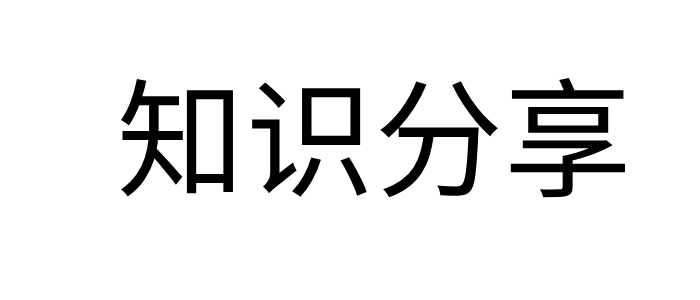Unit1 Goldilocksandthethreebears
一、单词(默写)
1.bear熊 2.forest森林 3.there(与be连用)有 4.house房子 5.soup汤 6.justright正合适 7.room房间 8.hard硬的 9.soft柔软的 10.afraid害怕的11. their他们的 12.her她(宾格) 13.help救命 14.beside在……旁边 15.between在……中间 16.really真正地 17.then然后 18.find找到,发现 19. infrontof在……前面
二、词组(默写)
1、intheforest在森林里 2、abeautifulhouse一座漂亮的房子 3、hungryandthirsty又饿又渴
4、somesoup一些汤 5、toocold/hot太冷/热 6、intheroom在房间里 7、toohard/soft太硬/软
8、threebears三只熊 9、havesomecakes吃些蛋糕 10、inthekitchen在厨 11、inthefridge在冰箱里 12、findtheircousin发现他们的表弟
三、句型(默写)
1. Thereisahouseintheforest.在森林里有一个房子。
2. Thereissomesouponthetable.在桌子上有一些汤。
3. Therearethreebearsinfrontofher.在她前面有三只熊。
4. Thissoupistoocold.这汤太冷了。
5. Whatabeautifulhouse! 多么漂亮的房子!
6. Sheishungryandthirsty.她是又饿又渴。
7.Bobbycannot(can’t) seeanycakesinthefridge. 波比看不到冰箱里有蛋糕。
四语法点(理解)
1.Therebe句型表示“某处有某物”
(1)其中thereis用于单数名词或不可数名词,如:
Thereisapencilcaseintheschoolbag. Thereissomesoup/milk/tea/coffee/juice/water/chocolate.
(2)Thereare用于可数名词的复数,如: Therearesomedesksintheclassroom.
(3)Therebe句型的就近原则:be动词后面如果跟的是不止一种物品,就根据离它最近的物品选用is或are.如:Therearesomepicturesandatelephone. Thereisatelephoneandsomepictures.
2.Therebe句型的否定形式:在be动词的后面加not(isnot可以缩写为isn\”t,arenot可以缩写为 aren\”t)把some改成any。 例:Thereisapencilinthepencil-box.(改为否定句)Thereisn\”tapencilinthepencil-box.
Therearesomecrayonsonthedesk.(改为否定句) Therearen\”tanycrayonsonthedesk.
3.“some”和“any”都有“一些”的意思.“some”一般用于肯定句,“any”用于否定句和一般疑问句。但在一些表示委婉请求,想得到对方肯定回答的疑问句中,也用“some”.
例:1.Therearesomewa
termelons in the basket.(肯定句)
2.There aren\”t any birds in the tree.(否定句)
3.Are there any toy trains on the table?(疑问句)
4.Would you like some tea?(表委婉请求)
4.can在否定句中的用法:表示某人不能做某事时,通常在can后面加否定词not, 后面加动词原形。 Bobby cannot(can’t) see any cakes in the fridge.
5.感叹句的结构:感叹句常用how或what来引导
(1)what引导的感叹句
a.What+a/an+形容词+可数名词单数!What a beautiful house!
b.What+形容词+可数名词复数! What nice dresses! c. What+形容词+不可数名词!
What delicious milk!
(2)how引导的感叹句
How+形容词/副词! How nice!

Unit 2 A new student
一、单词(默写)
1.student 学生 2.classroom 教室 3.floor楼层 4.computer电脑 5. first第一,首先
6.second 第二 7.third 第三 8.playground 操场 9.swing秋千 10.push 推
11.heavy 重的 12.stop 停下 13.high 高的 14.great 很多的,极大的
二、词组(默写)
1.a new student 一名新学生
2.show ……around 带领……参观
3.how many classrooms 多少间教室
4.in our school 在我们学校里
5.some computer rooms 一些电脑室
6.a music room 一间音乐室
7.on the third floor 在三楼
8.a table tennis room 一间乒乓球室
9.go and have a look去看看
10.sing and dance 又唱又跳
11.drink some nice juice 喝些美味的果
12.go to the cinema 去电影院
13.have a nice ice cream 吃一个美味的冰淇淋
14.in the playground 在操场上
15.go and play 去玩一玩
16.on the swing 在秋千上
17.so heavy 真的重
18.too high 太高
19.great fun 很有趣
20.play again. 再玩一次
21.go home 回家
22.an art room 一间美术室
三、句型(默写)
1.Can you show her around ? 你能带领她参观吗?
2.How many classrooms are there in our school ? 在我们学校有多少间教室?
3.Our classroom is on the second floor.我们教室在二楼。
4.Are there any computer rooms ? 有一些电脑室吗?
5.Is there a music room ? 有电脑室吗?
6.Let’s go and have a look. 让我们去看看。
四、语法点(理解)
1.How many…(可数名词复数) are there…? 用于询问某处有多少…
例:How many classrooms are there in our school?
2.There be 的一般疑问句,是将be动词提前到there的前面,表示“有……?”
(1)Is there…? Yes, there is ./ No, there isn’t .
例:Is there a music room ?
(2)Are there any…? Yes, there are./ No, there aren’t.
例:Are there any books?
3.几个缩写 isn’t = is not aren’t= are not it’s = it is they’re= they are
4.序数词
one —– first two — second three—- third four—fourth five—fifth six—sixth
5.在楼层前用介词on , on the first /second/ third floor 在一/二/三楼…

Unit 3 Our animal friends
一、词汇
our animal friends 我们的动物朋友 two fish 两条鱼 the other 另一个a big tail 一条大尾巴 big bodies 大身体 have no 没有four legs 四条腿 nice wings 漂亮的翅膀 red eyes 红眼睛long ears 长耳朵 big arms 大手臂 big feet 大脚its body 它的身体 your fingers 你的手指 on the farm 在农场上☆bald eagles 白头秃鹰 ☆polar bears 北极熊 ☆a big kangaroo 一只袋鼠☆in Canada 在加拿大 ☆in Australia 在澳大利亚 ☆like the rain 喜欢下雨
☆sunny weather 晴朗的天气 ☆come out 出来 ☆carry an umbrella 拿一把雨伞
二、句型
1. I have two animal friends. 我有两个动物朋友。
2. One is red and the other is black. 一个是红的另一个是黑的。
3. They have big eyes and big bodies. 它们有大眼睛和大身体。
4. They have no legs and arms. 它们没有腿和手臂。
5. It has four legs and a short tail. 他有四条腿和一条短尾巴。
6. It has two legs and two nice wings. 它有两条腿和一双漂亮的翅膀。
7. He has a dog. 他有一只狗。
8. She has a bird. 她有一只鸟。
9. It can talk and fly. 它既会说话又会飞。
10. Do you have an animal friend?
Yes, I do. 你有一个动物朋友吗? 是的,我有。
11. Does it have a long tail?
Yes, it does. 它 有一条长尾吗? 是的,它有。
12. Does he have a parrot?
No, he doesn’t. 他有一只鹦鹉嘛? 不,他没有。
13. Does she have two fish?
No, she doesn’t. 她有两条鱼吗? 不,她没有。
14. Do they have animal friends?
No, they don’t. 他们有动物朋友吗? 不,他们没有。
15. Those are not legs. 那些不是腿。
16. Give it a cake. 给它一个蛋糕。
三、语音
Uu / Λ / bus, duck, summer, sun, umbrella, mum, lunch, cup, rubber, run, but, much, jump,
Sunday, subject,
四、语法
have / has 的用法
1、表示某人有某物。
2、主语是第一、第二人称单数和复数时用 have, 如 I, you, we, they, the students …
主语是第三人称单数时用 has, 如 he, she, it, Helen, the bird, my father …
3、肯定句: … have / has …
We have a PE lesson on Monday morning. / It has a long tail.
否定句: … don’t / doesn’t +have …
They don’t have animal friends. / She doesn’t have a dog.
一般疑问句: Do / Does … have … Yes, …do / does. No, … on’t / don’t.
Do you have a football? Yes, I do. / No, I don’t.
Does he have a toy car? Yes, he does. / No, he doesn’t.

Unit 4 Hobbies
一、词汇
sing and dance 唱歌跳舞 be good at 擅长于 with my brother 和我弟弟read stories 读故事 in the park 在公园里 play the piano 弹钢琴a lot of 许多 watch films 看电影 talk about 谈论某事my hobby 我的爱好 their hobbies 他们的爱好 in winter 在冬天very well 很好 an idea 一个主意 a great idea 一个好主意this afternoon 今天下午 on the ice 在冰上 be good at skating 擅长溜冰
a big hole 一个大洞 in the ice 在冰里 cold and wet 又冷又湿like climbing 喜欢爬山 like swimming 喜欢游泳 like drawing 喜欢画画play basketball 打篮球 play table tennis 打乒乓 play football 踢足球
二、句型
1.What do you like doing? 你喜欢干什么?
I like playing basketball and football. 我喜欢打篮球和踢足球。
2.I can play basketball well, but I’m not good at football. 我篮球打得很好,但我不擅长足球。
3.He likes playing football too. 他也喜欢踢足球。
4.She also likes playing the piano. 她也喜欢弹钢琴。
5.They both like swimming. 她们都喜欢游泳。
6.What does he like doing? 他喜欢干什么?
He likes drawing. 他喜欢画画。
7.What does she like doing? 她喜欢干什么?
She likes reading stories. 她喜欢读故事。
8.What do they like doing? 她们喜欢干什么?
They like watching films. 她们喜欢看电影。
9.Sam and Billy talking about their hobbies. 山姆和比利谈论他们的爱好。
10.Let’s go skating this afternoon. 咱们今天下午去滑冰。
11.Look out! 小心!
12.There is a hole in the ice. 冰里有一个洞。
13.Do you like wearing yellow? 你喜欢穿****色的衣服?
14.We all like climbing very much. 我们都十分喜欢爬山。
三、语音
Yy / j / year, yes, yellow, you, young
四、语法
1.询问别人喜欢干某事,What do/ does … like doing ?
喜欢干某事 like doing sth, doing表示喜欢经常做一件事。主语是第三人称单数时注意like后面加s.
不喜欢干某事 don’t/ doesn’t like doing sth
2.动名词的变化规律:
a. 一般情况下在动词后面加 ing. 如 going, reading, drawing, playing…
b. 以不发音的字母e结尾的动词,去e再加ing. 如 dancing, making…
c. 以“元音+辅音”结尾的重读闭音节单词,先双写辅音字母再加ing. 如 swimming, running, getting, putting…
